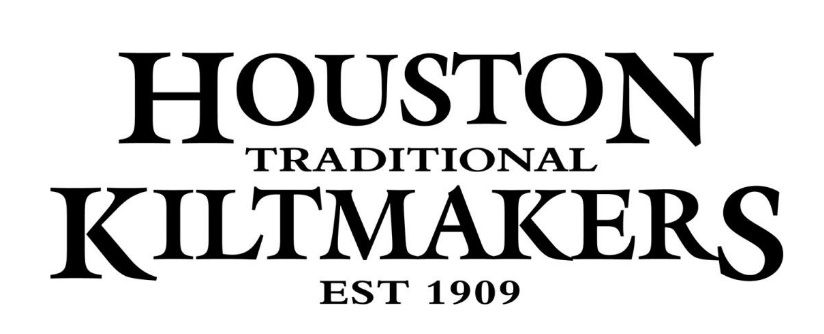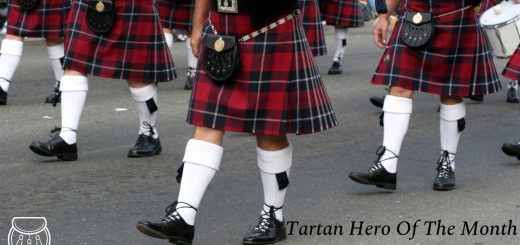Where the kilt began…
The kilt is a key piece of scottish history and is easily identified all over the world, representing Scotland and our history. The kilt is celebrated globally during variations of special occasions and what we know as our national dress has such a rich history behind it most aren’t aware of. This blog covers a little bit of history on the kilt and where it all began.

Where did tartan come from? –
Tartan was derived from plain tweed/wool cloth, this was commonly used as threads were weaved together to create a warm durable fabric. Tartan uses the same technique with alternating coloured threads to create a repeat pattern.

It is woven through warp and weft threads at 90 degree angle. the pattern forms visible diagonal lines where the colour crosses with its warp/weft thread.
It is hard to trace tartan back to an exact date but is estimated to date back around the 15th century, yarns were more limited and despite wool being a natural material most people worn plain tweeds and tartan was more of a status symbol to wear because of its limited quantities during early stages in the 15th- 17th century.
Once tartan became more mainstream in later 17th century onwards tartan was woven in wide strips of cloth which were pleated and worn with a belt round the waist and draped over the shoulder. Tartans because a means of identification to highlanders as more tartan variations came about to represent different family names, clans and lands.
Where did the great kilt come from?-

A great kilt is where the kilt we know today originated from, a great kilt was made up of tartan or plain wool woven cloth. laid on the ground and hand pleated, the wearer would lie on top of the pleated fabric and then belt it round their waist and drape the excess fabric round their shoulder.
The great kilt provided warmth in poor conditions and was a durable garment due to the lasting natural of woven wool cloth. In some situations this cloth would also be used as a blanket or shelter in some conditions.
The great kilt has come a long way since then and developed to what we recognise as a kilt now, the great kilt is still honoured by the wearing of shoulder plaids usually for Grooms or special occasions.
Great kilt to small kilt-
So what actually happened to the great kilt?, well the great kilt served its purpose for many a century but was adapted to a small kilt also known as a walking kilt which was still one piece of cloth hand pleated and belted but allowed for better range of movement and less heavy fabric on the shoulder.
It was then developed again to have pre-sewn pleats and stitched parts to ensure its durability and make it more suitable for military and work wear. This is what we essentially know a kilt to be now after the industrial revolution kilts were fully sewn manufactures but a proper scottish kilt is made by hand by skilled kiltmakers.
Why do people wear kilts?-
Mainstream fashion evolved in Scotland to the clothing we all wear now but kilts have always remained in scottish fashion existing now as formal wear to special events and occasions as part of an elegant highland wear outfit. Kilts can still be seen all over the world and well loved and celebrated as pieces of scottish culture and heritage.

People often opt for kilts as a more unique formal look to a suit, there’s thousands of tartans to fit every style and personality a highland wear kilt outfit can be completely dressed to your own personal style and has more unique sense of individuality.
Many scottish and non scottish people wear kilts to participate in scottish culture or celebrate their heritage, many people will wear a family or clan name tartan that links back to their background allowing them to feel connected to their loved ones.
Some people take pride in wearing their kilt as Scottish highlanders fought for their right to wear a tartan which was taken away from them in the 17th century. The dress act of 1746 seen scottish people unable to wear tartan without legal punishment including 6 months jail time. This was revoked around 30 years later and many Scots embrace the kilt in respect to the right to wear a tartan in Scotland.
Symbolism to Scotland-
Kilts and tartan are part of Scotland’s identity and an empirical part of Scotland’s rich and long history. As mentioned Scots fought for our right to wear a tartan as it was taken from us, kilts have a place in every Scots heart for their representation to the land and part of a culture that belongs to us but is welcome to everyone uniting people together.
Tartans have evolved from a few select weaves to thousands of names, families, clans , groups and brings light to those who walked and fought before us for the land. As leading pieces of scottish identity scottish culture and history is deeply sentimental to Scots as our own unique story as a country.

Why buy a kilt?-
Owning a kilt is a great wardrobe staple, many think kilts are a one wear wonder and this couldn’t be further from the truth. A kilt can be worn to a wide array of events such as christenings, graduations, balls, dinners, charity events, ceilidhs, burns suppers, banquets, highland games and even football games.
Your kilt outfit can be styled up or down for any occasion and even worn casually with sporran, boots, and a jumper/t-shirt/football shirt.
Kilts are also highly sustainable as they are made from wool a 100% renewable natural material and due to the high quality nature of a kilt they are designed to last you a lifetime with proper care. Many kilts end up passed down through generations like an heirloom or memento of special occasions.
Kilt outfits are special for grooms allowing them to feel and look their very best at their wedding and have soemthing special like their version of the brides dress.
If you have any enquires on kilts or highland wear, we would love to welcome you in store or alternatively you can reach out to us at [email protected] or call us on 0141 889 4879.
You can also browse our full buy range here

